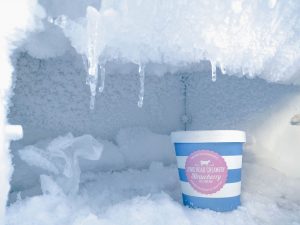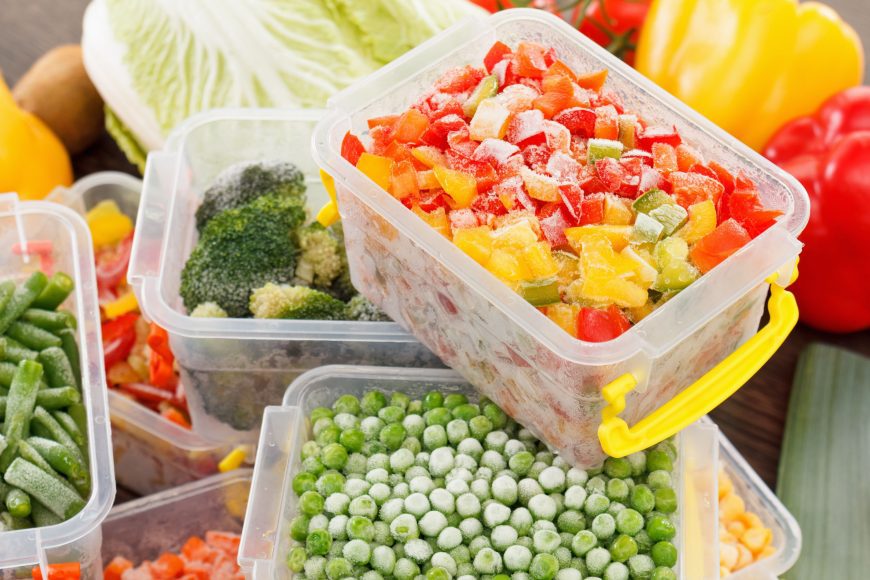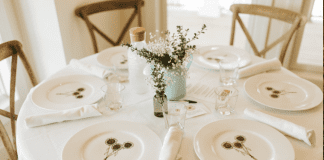Learn to use your freezer wisely to prevent food waste.

The average American household wastes about 32 percent of food, costing almost $2,000 per year. Well, it’s a new year and a great time to start new habits. A wise woman once told me that “you can freeze almost anything.”
I didn’t believe it at first. I mean … anything??!
But it turns out that it’s true. With a little bit of forethought, some general planning, and some consistency, I have found that my family puts way less food in the trash every month simply because I use our freezer-space more effectively.
You’ll Need:
- Freezer-safe bags and/or freezer-safe containers
- Permanent marker for labeling
- Plastic wrap
- If you have a food-safe vacuum storage bag system, that will be useful too

General Rules
- It’s best to freeze items how you plan to use them (i.e., chopping onions, celery, fresh broccoli, bell peppers, carrots, and potatoes prior to putting them in freezer bags will save time and effort later by making them ready to use). I use frozen veggies in soups, casseroles, and other dishes. I cut up bananas when they start to turn brown and freeze them for making banana bread later.
- Some things freeze better whole. I like to freeze tomatoes and spinach leaves whole. I also freeze chunks of banana and whole baby carrots to be added to smoothie drinks. Whole loaves of bread can be frozen as they are. When ready to use, a whole bread loaf can be placed on the counter at room temperature and will be ready to eat in about an hour.
- Don’t forget liquids! You can freeze whole gallons of dairy milk, freezer-safe containers of chicken stock, or pasta sauce for later use. Chili, soups, extra gravy, etc., can all be frozen when there is excess.
- Whatever you are freezing, take consideration when putting away how you’ll be using it later. Put things in small serving size quantities. For example, when I freeze chicken stock, I separate it into 8-12 ounce quantities since that’s about what I would use for cooking a meal.
Portion What You Make & Buy
I like the idea of saving for later. It’s sometimes a relief to be able to grab something homemade from the freezer and simply heat it up when life gets busy. For example, after making a large lasagna, I’ll set aside half of it. I’ll cut it into single-person sized pieces and place them in individual bags for later.
I also do the same thing with baked goods since I sometimes get carried away! I’ll half a batch of cookie dough, roll it into a log, and wrap in plastic wrap. The cookie dough log is then placed in a plastic freezer bag. I can then use a knife to slice pieces as needed for baking a few cookies here and there. My typical batch of pumpkin bread batter yields two large loaves. I’ll bake them both and wrap one in plastic wrap before placing it in a freezer bag to be eaten later.
With meat products like chicken breast, ground turkey, and beef, I separate them as soon as I get them home into meal-sized portions. For example, a family-sized pack of chicken will be divided into 2 or 3 labeled freezer bags for later use. A large pot roast might make two meals, so I’ll cut it in half and freeze one half while the other half will be cut into stew-meat-sized cubes before being frozen.
I’ll sometimes order fresh bakery bagels and have them pre-sliced and then freeze them – placing savory bagels together and sweet flavors together. That way, the bagels don’t go stale and we’ll have tasty items to choose from for a while. I pop them straight into the toaster to warm them up!
Experiment!
I have found a few things that don’t freeze well, but overall, I’ve experienced a high rate of success. I’ve learned that things with high water content like lettuce, watermelon, cabbage, and cucumbers aren’t good candidates for the freezer. Never try to freeze eggs in the shell! However, mincing things like garlic cloves, ginger, chili peppers, or fresh parsley and freezing in ice cube trays works well. So give it a try.
Happy saving!










